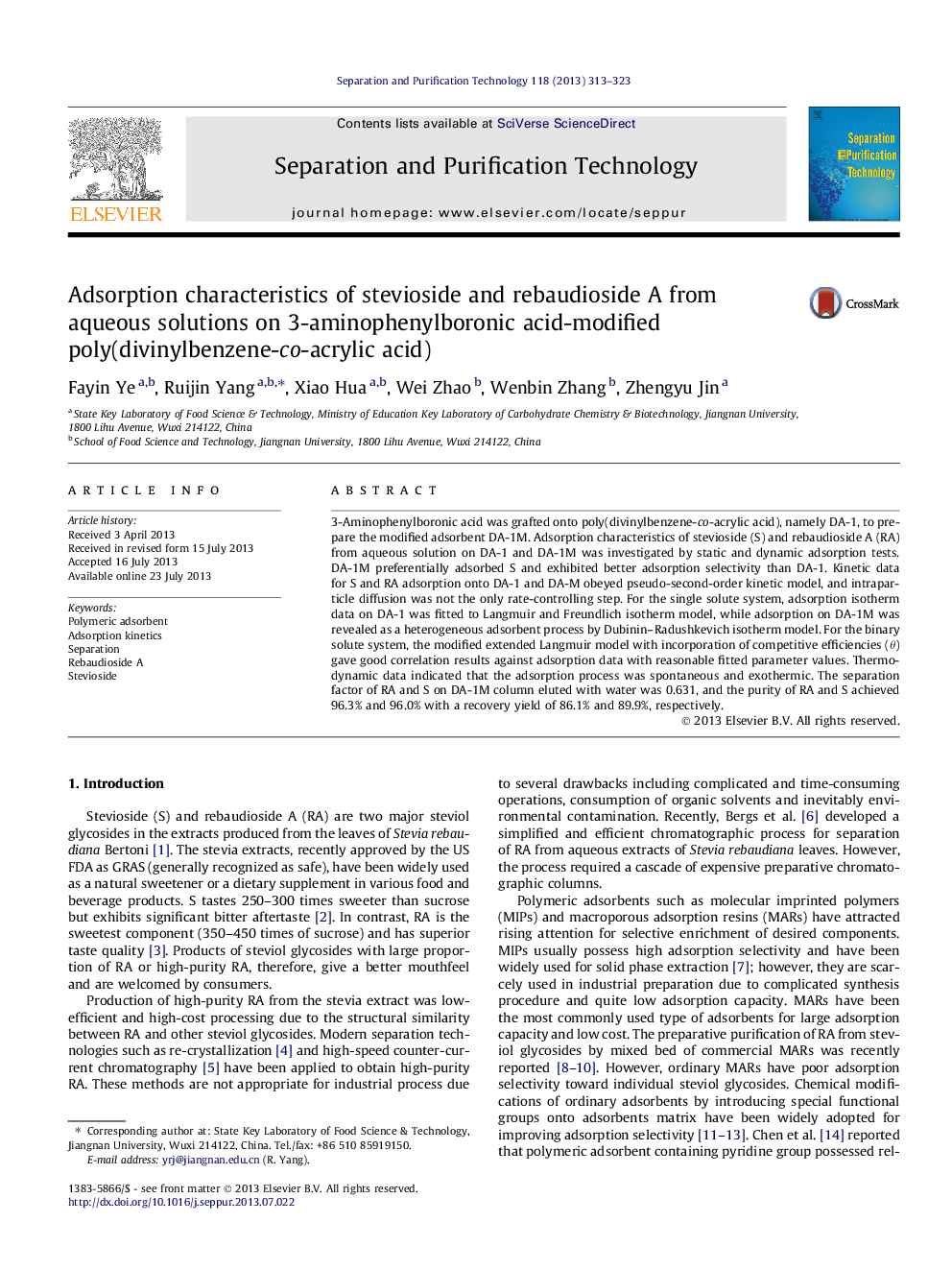| کد مقاله | کد نشریه | سال انتشار | مقاله انگلیسی | نسخه تمام متن |
|---|---|---|---|---|
| 641510 | 1457001 | 2013 | 11 صفحه PDF | دانلود رایگان |

• 3-Aminophenylboronic acid-modified polymeric adsorbent DA-1M with improved adsorption selectivity toward stevioside was prepared.
• Pseudo-second-order model and Dubinin–Radushkevich model described batch adsorption.
• Adsorption process was spontaneous and exothermic.
• Stevioside and rebaudioside A were well separated on DA-1M-packed column.
3-Aminophenylboronic acid was grafted onto poly(divinylbenzene-co-acrylic acid), namely DA-1, to prepare the modified adsorbent DA-1M. Adsorption characteristics of stevioside (S) and rebaudioside A (RA) from aqueous solution on DA-1 and DA-1M was investigated by static and dynamic adsorption tests. DA-1M preferentially adsorbed S and exhibited better adsorption selectivity than DA-1. Kinetic data for S and RA adsorption onto DA-1 and DA-M obeyed pseudo-second-order kinetic model, and intraparticle diffusion was not the only rate-controlling step. For the single solute system, adsorption isotherm data on DA-1 was fitted to Langmuir and Freundlich isotherm model, while adsorption on DA-1M was revealed as a heterogeneous adsorbent process by Dubinin–Radushkevich isotherm model. For the binary solute system, the modified extended Langmuir model with incorporation of competitive efficiencies (θ) gave good correlation results against adsorption data with reasonable fitted parameter values. Thermodynamic data indicated that the adsorption process was spontaneous and exothermic. The separation factor of RA and S on DA-1M column eluted with water was 0.631, and the purity of RA and S achieved 96.3% and 96.0% with a recovery yield of 86.1% and 89.9%, respectively.
Figure optionsDownload as PowerPoint slide
Journal: Separation and Purification Technology - Volume 118, 30 October 2013, Pages 313–323